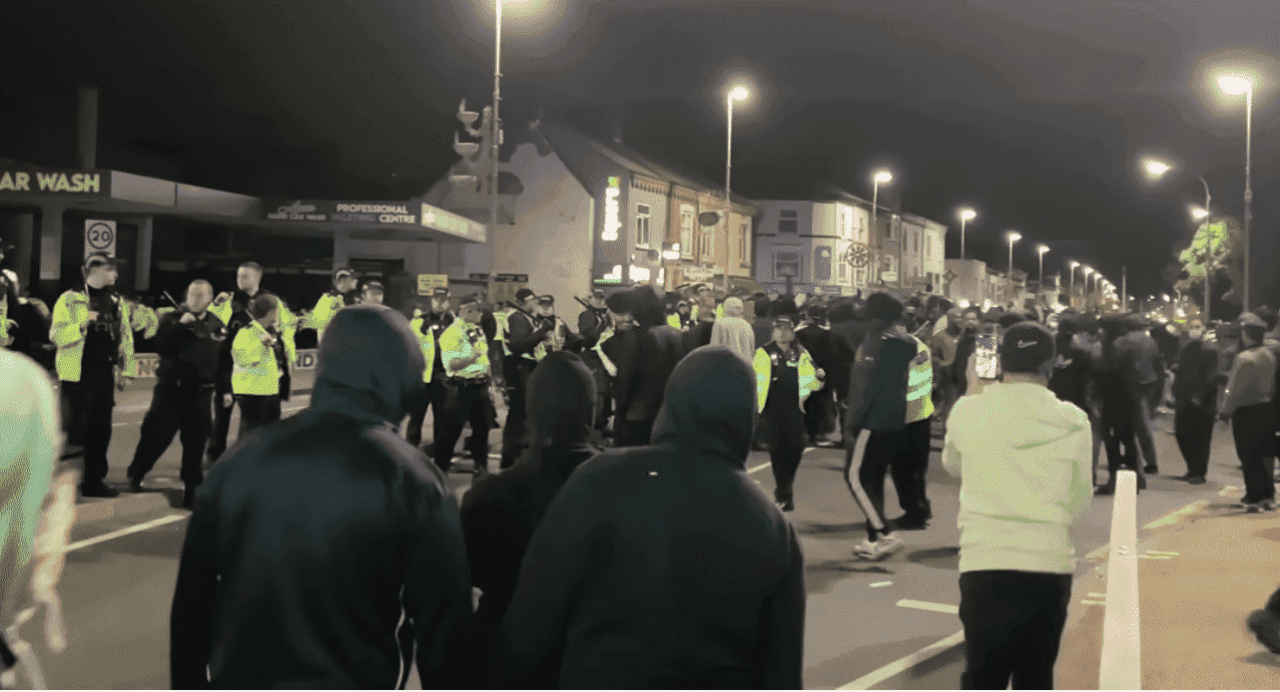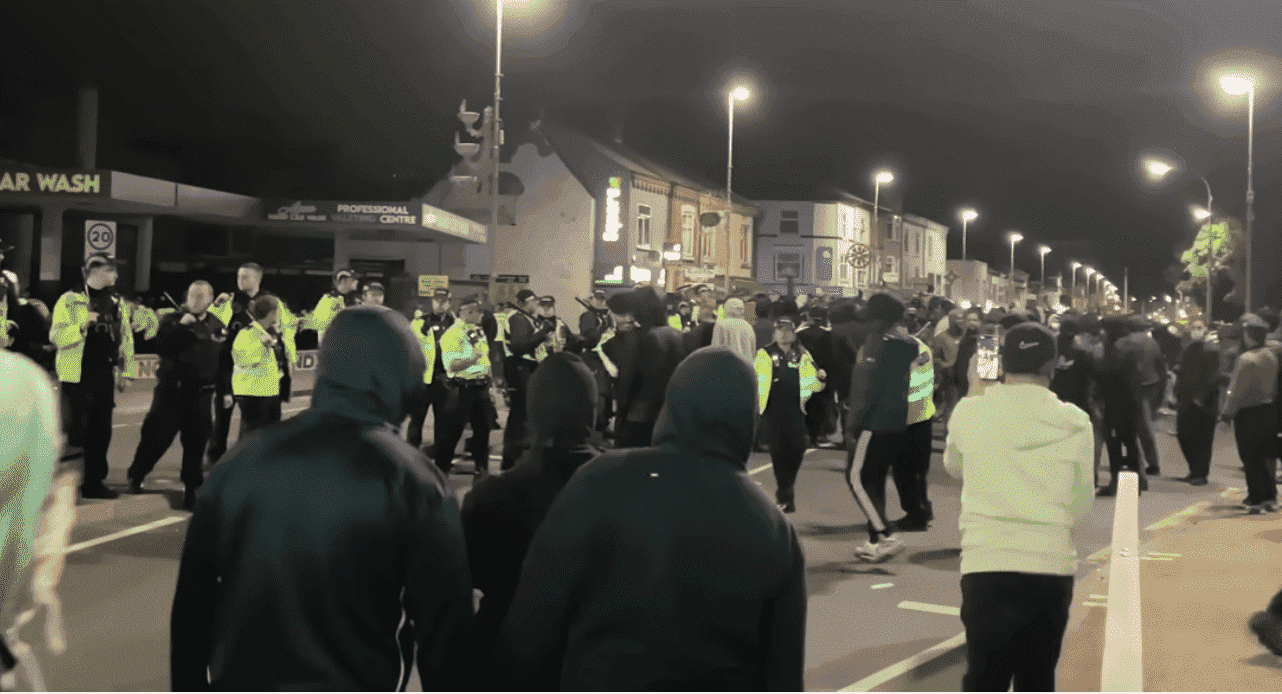Leicester is sometimes held up as a success story in multicultural Britain. The city is a melting pot where people of all creeds and colours live side-by-side. However, recent events have tarnished that reputation.
Over the weekend, once again there were violent clashes between Hindus and Muslims in the east of the city. Leicestershire Police announced last night that a total of 47 arrests have been made, for offences ranging from assault to violent disorder.
On Saturday, an ‘unplanned protest’ by a group of Hindu young men triggered a counterprotest by members of the Muslim community. Young men can be seen in video footage with their hoods up and faces covered (wearing covid masks and balaclavas), walking the streets in large groups looking menacing. They are separated by police. Some can be seen carrying weapons, clearly prepared for violent confrontation. There are moments when it looks like the police are struggling to maintain control; at one point, officers are pelted with bottles.
In one video, a feral mob is seen smashing up a car and attacking the driver
The troubling incidents of recent days appear to be an escalation of violence that broke out after an India v Pakistan cricket match on 28 August, when anti-Pakistan slogans were shouted. But nearly a month on from those ugly clashes, the unrest has continued.
In one unverified video, which appears to have been taken in recent days, a feral mob is seen smashing up a car and attacking the driver. In another, a young man’s face is bloodied; he is mocked as a police officer comes to his aid. Another clip shows an angry group opposite an officer in the dog unit, one shouts: ‘Don’t be scared of the f***ing dog.’
For now, police have managed to contain the worst of the violence. But this situation is not sustainable; a number of officers have been injured. It surely won’t be long before violence once again spills out onto the streets of Leicester. Where and how will this all end?
The majority of Hindus and Muslims in Leicester are law abiding citizens, yet a minority of political agitators appear to be fuelling division. Both sides are accusing one another of being extremists, be it ‘Islamist’ or ‘Hindutva’, a form of Hindu nationalism.
While police have been making a number of arrests – and bringing those responsible to justice (one man has been jailed in connection with the disorder) – officers are facing an uphill task to keep order. Dealing with law and order on the streets isn’t the only challenge the police have encountered. The circulation of fake news and misinformation on social media is also fuelling inter-religious tensions.
One rumour that was circulated suggested that a mosque was being attacked. Leicestershire Police promptly debunked it, responding that ‘officers on the ground have confirmed this is not true.’ They have encouraged people to tweet responsibly, but this is difficult, if not impossible to police.
Another rumour propagated widely – and again found to be baseless – was that a Hindu man had tried to kidnap a Muslim girl in the city. An image of an innocent man and his car was circulated. A police statement debunked this falsehood too, warning that ‘making a false allegation or posting misinformation on social media can cause significant distress and will have implications for other people.’ As tensions continue to rise, it won’t be surprising if we see the police having to address more of these wild rumours.
But as this battle plays out online, they are also busy dealing with violent clashes on the streets – and worryingly religious buildings are being targeted. This weekend, a Hindu temple was vandalised. Footage shows a man climbing the Leicestershire Brahma Samaj building in Melton Road, in the north east of the city, pulling at a saffron coloured flag. Regrettably, this act of brazen vandalism of a place of worship is done in plain sight of the police. In a tweet about the incident the police, said: ‘we are aware of a video circulating showing a man pulling down a flag outside a religious building.’, an implicit reference to the Hindu temple. Yet it is unclear why they choose to identify the temple in an ambiguous way.
Religion is one thing police have been keen to shy away from in their various statements. Yet to stop the tide of violence, this failure to talk about the root cause of these ugly scenes won’t do. The reality of what we are seeing in Leicester is difficult for us to countenance, but it boils down to this: young men from two different faith communities are at war on Britain’s streets.
Rupert Matthews, the Police and Crime Commissioner for Leicestershire, has said he ‘fervently hope(s) that peace and calm can be restored in our communities very quickly and (I) am talking to community leaders to see how, together we can help.’ Let’s hope Matthews is right and there’s a swift end to this ugly cycle of sectarianism.







Comments